Countries in the East and South of Africa are experiencing slower Internet connectivity due to two submarine cables — EASSy and Seacom — being cut during the weekend.
The news comes as the last of the three submarine cables recently damaged off the west coast of Africa from a suspected undersea rock fall was repaired.
Read 2024 West Africa Submarine Cable Outage Report
According to an EASSy cable representative, a submarine cable repair ship has been mobilized and is on its way to the site of the cut, believed to be between South Africa and Mozambique. Depending on the weather and the extent of the damage, the cables are expected to be repaired within two weeks.
In the meantime, Internet Service Providers (ISPs) in affected countries have worked tirelessly to reroute traffic via other unaffected submarine cables and increase capacity via terrestrial cables.
Assessing the Impact
If we look at Cloudflare Radar, we can see the cuts have had a varying degree of impact on countries along the East coast of Africa from Kenya to South Africa.
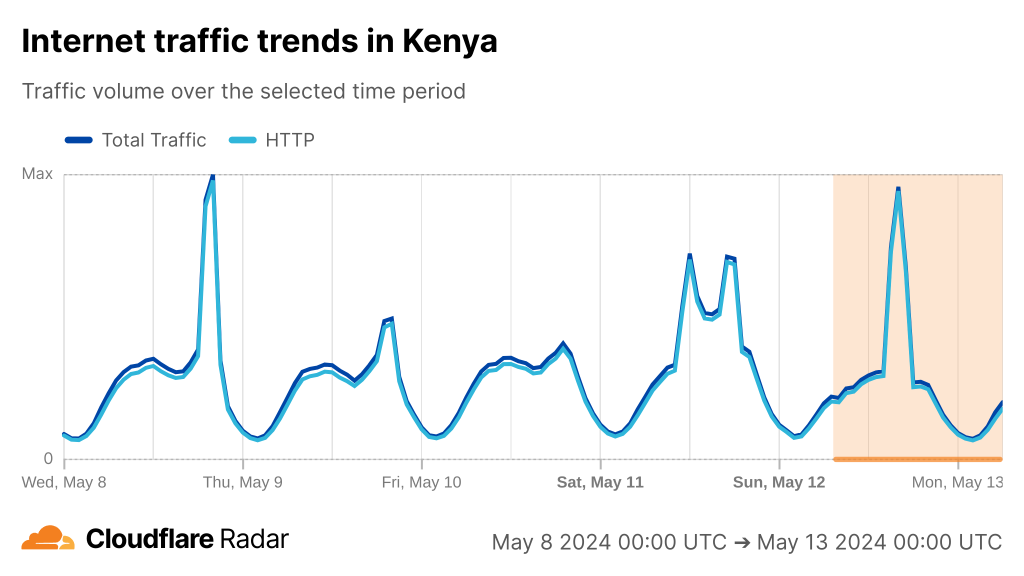
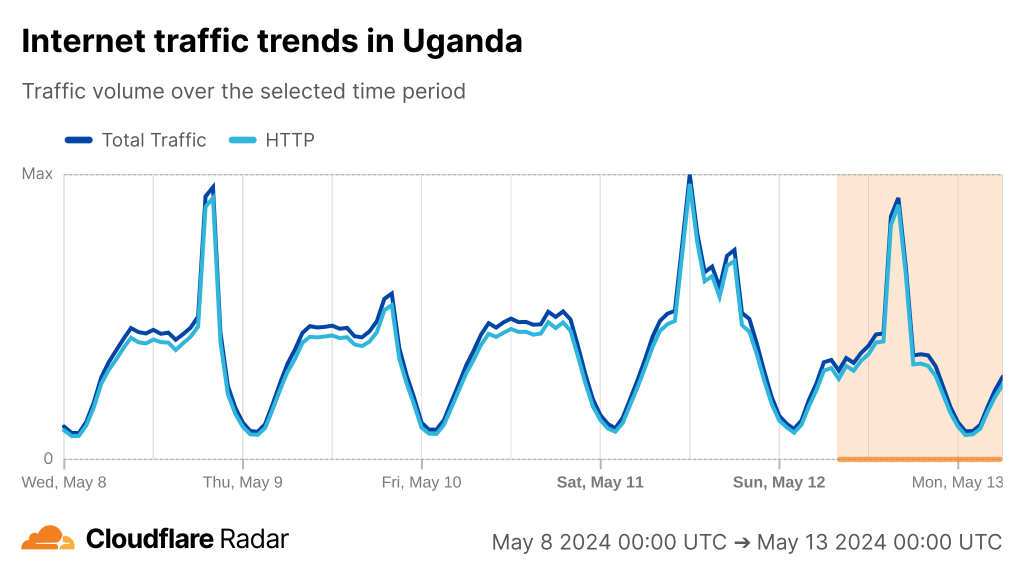
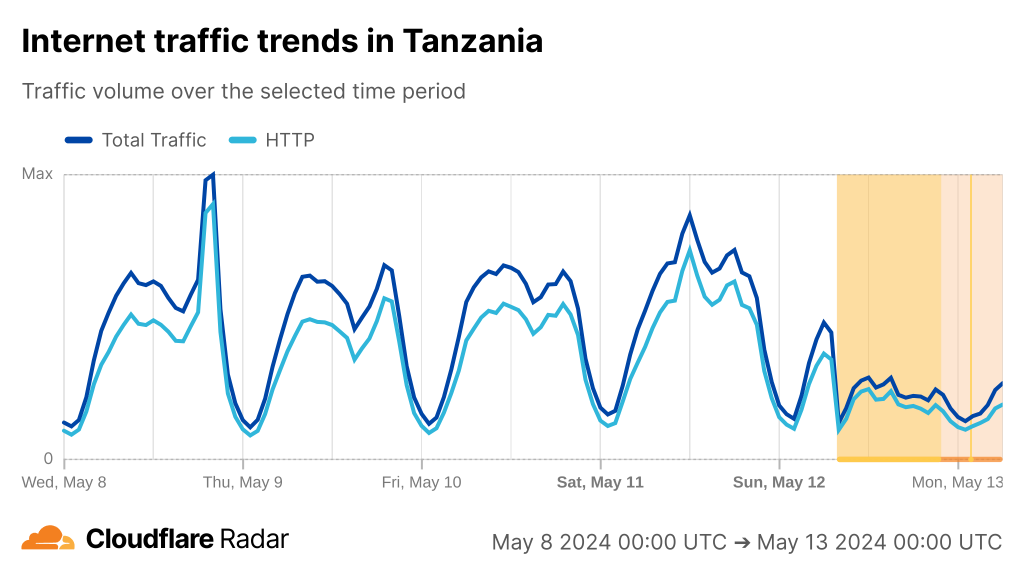
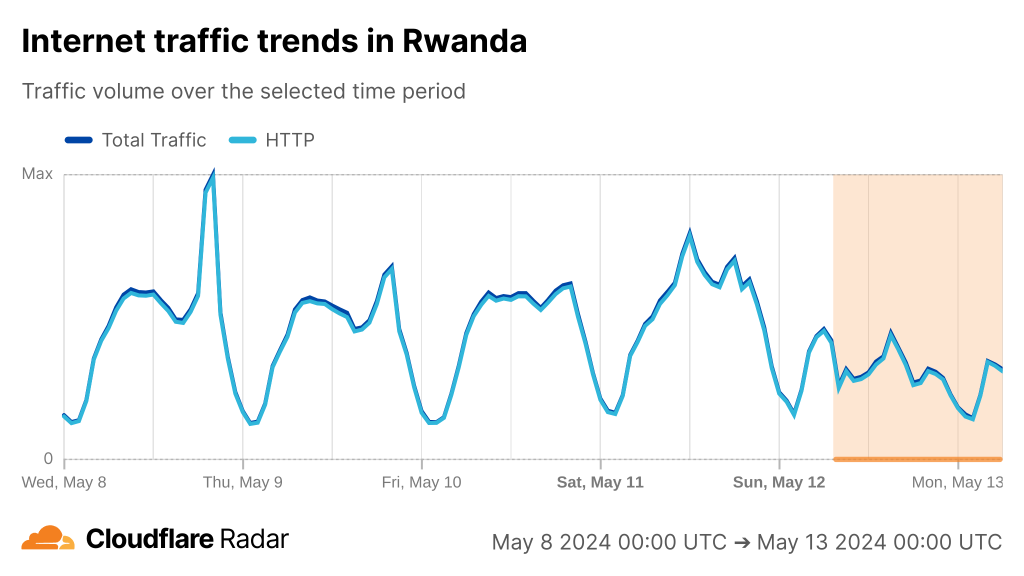
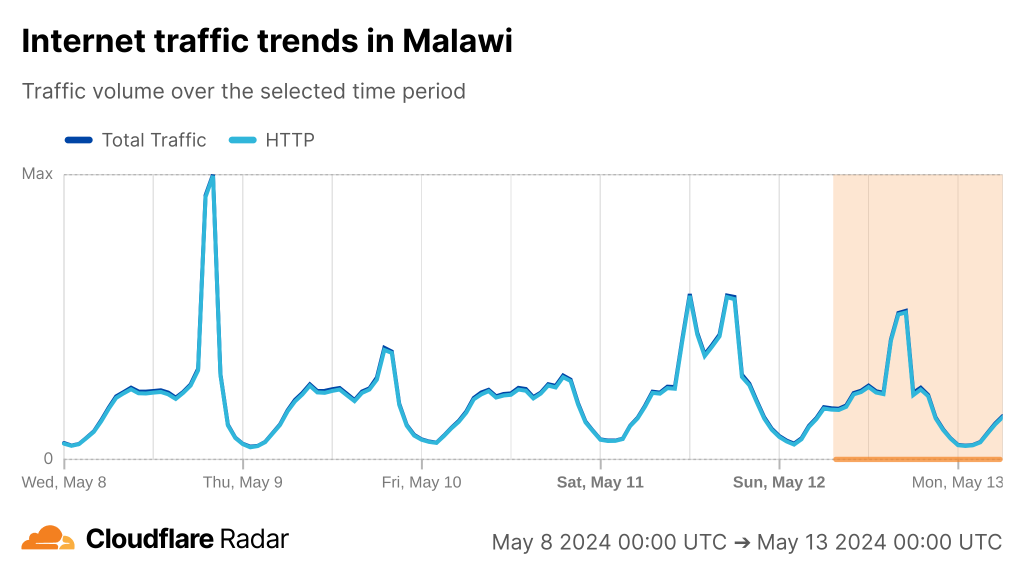
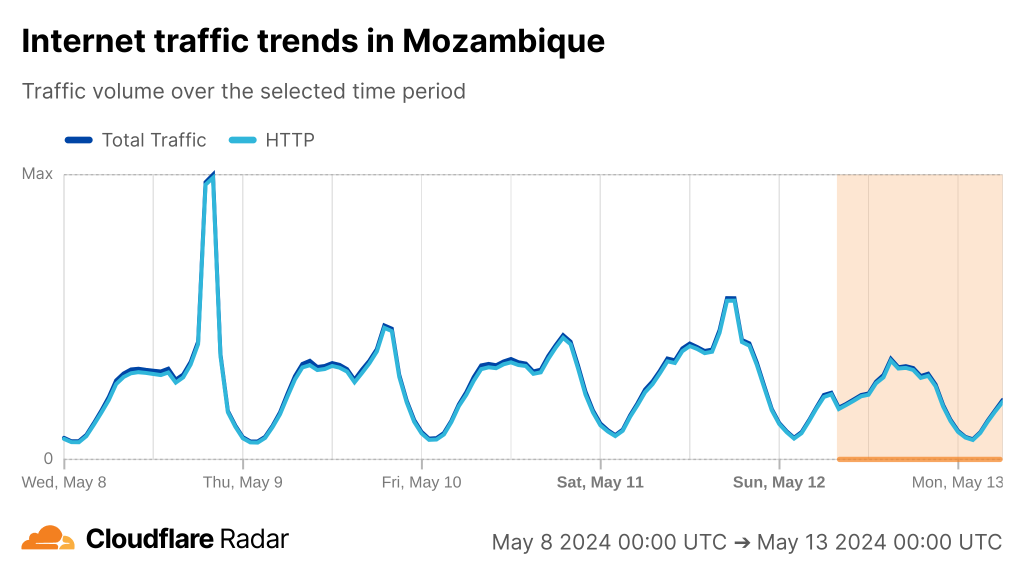
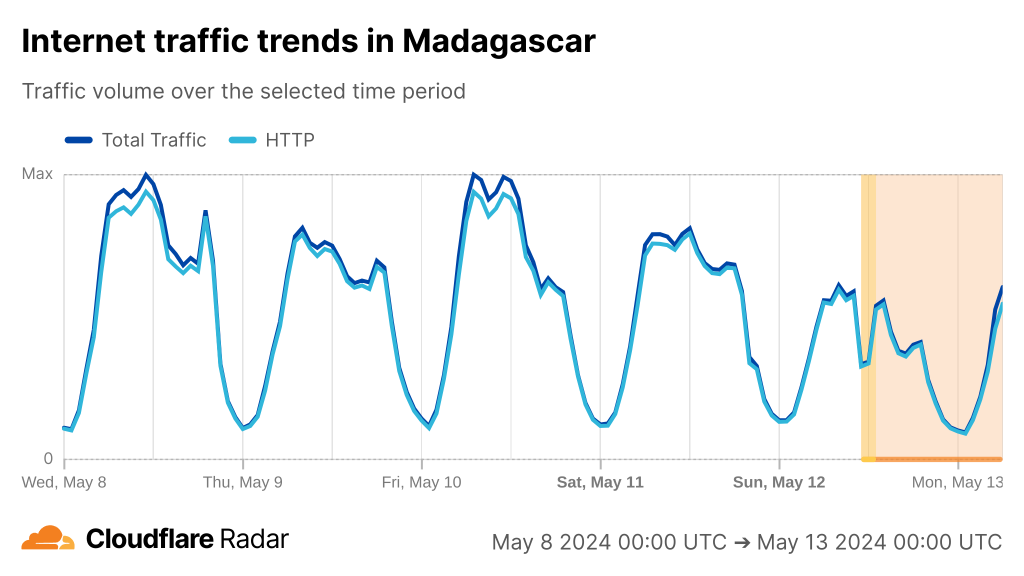
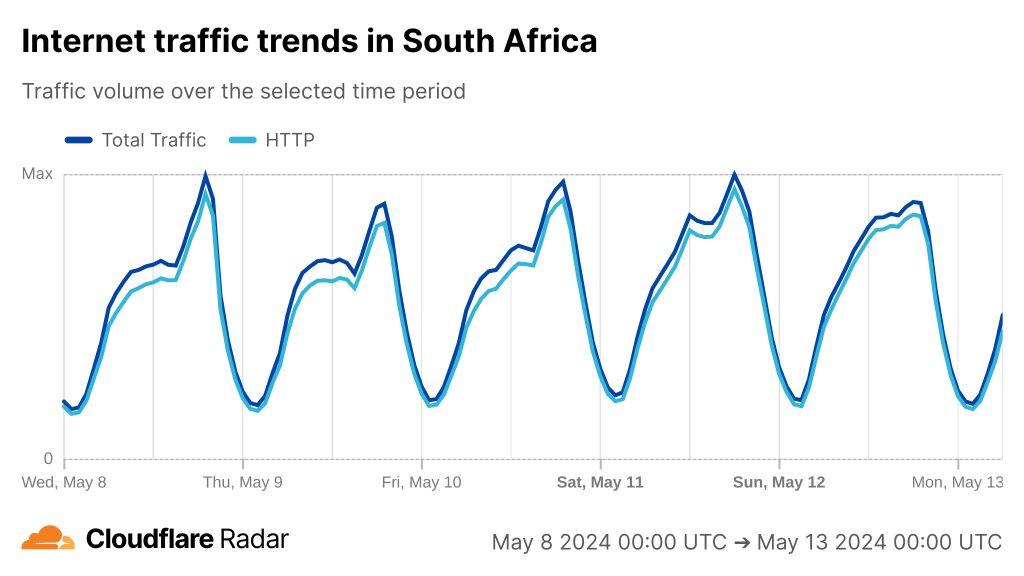
Tanzania has been most affected by the outage, with Internet connectivity falling by nearly 50% nationally, per IODA (Figure 9), and Internet traffic at the local Internet Exchange, TIX, dropping by almost 90% (Figure 10).
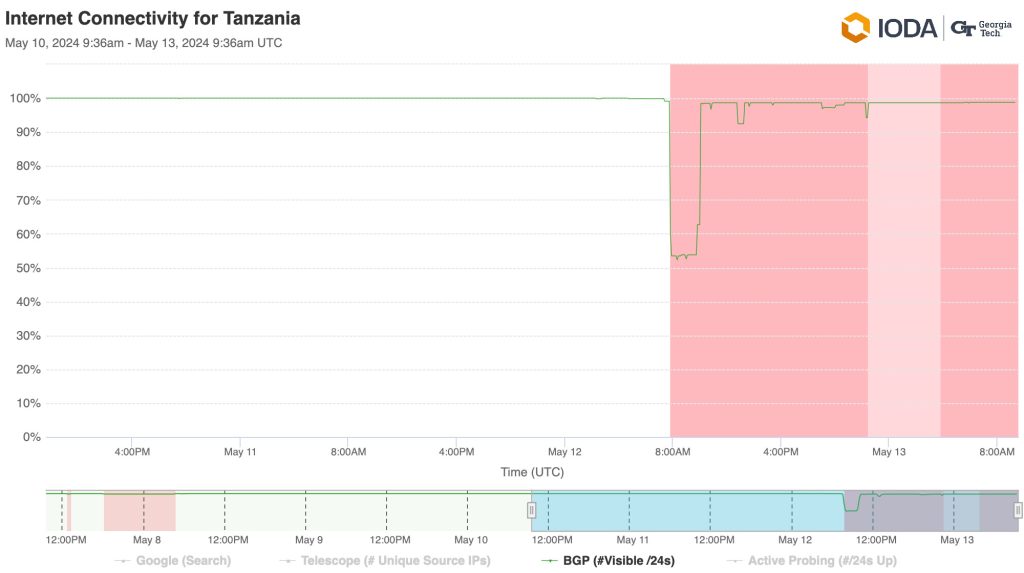
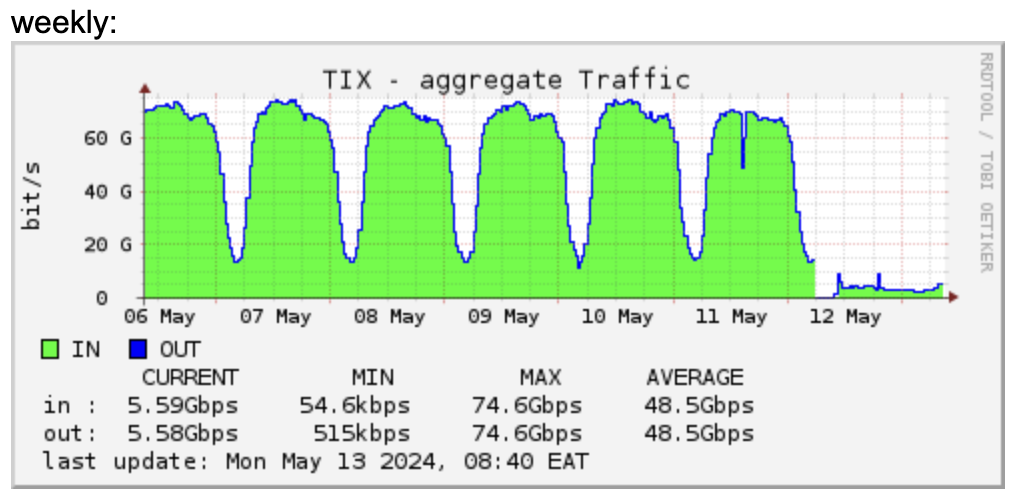
Kenya, South Africa, and Uganda were the least affected by the outage due to their access to other submarine and terrestrial cables and more robust peering ecosystems, whereby many of the country’s networks are connected to one another. This increased ‘interconnectivity’ helps when one path has a fault and allows Internet traffic to be swiftly rerouted via another path.
These factors contribute to the Internet in these countries, ranking among Africa’s most resilient (see graph below).


